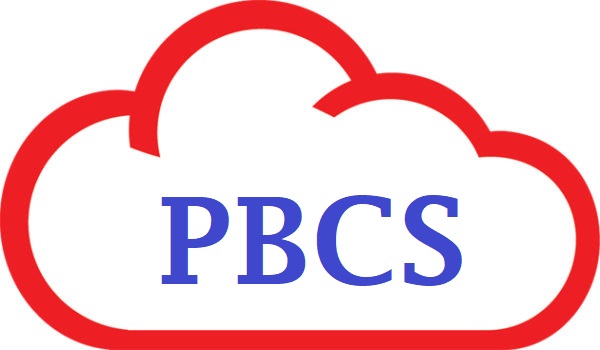In the realm of financial planning and analysis, the ability to traverse hierarchical data structures is paramount. Oracle’s Planning and Budgeting Cloud Service (PBCS) equips financial professionals with a powerful tool for this purpose: the @ILANCESTORS calculation function. This function enables users to access and aggregate data from all ancestors of a given member within a hierarchy, enhancing the accuracy and depth of financial analysis. In this article, we’ll explore the functionalities and applications of the @ILANCESTORS function within PBCS, showcasing how it empowers financial analysts to navigate hierarchies with precision.
Understanding the @ILANCESTORS Calculation Function
The @ILANCESTORS function in PBCS is designed to retrieve data from all ancestors of a specified member within a hierarchy. Ancestors are members that are hierarchically above a given member. This function simplifies the process of aggregating data from higher-level members, enabling financial analysts to perform detailed hierarchical analysis. The syntax of the function is as follows:
@ILANCESTORS(Dimension, Member)
In this syntax:
- Dimension: Represents the dimension containing the hierarchy from which data will be aggregated.
- Member: Denotes the specific member within the hierarchy for which data from all ancestors will be retrieved.
The function aggregates data from all ancestors of the specified member, allowing for more comprehensive analysis and reporting.
Applications of the @ILANCESTORS Function in PBCS
- Hierarchical Analysis: The primary application of the @ILANCESTORS function is to perform hierarchical analysis by accessing and aggregating data from all ancestors of a member. This includes analyzing data at various hierarchical levels to gain a deeper understanding of performance.
- Consolidated Reporting: It aids in consolidated reporting by allowing users to retrieve data from all higher-level members, facilitating the preparation of comprehensive financial statements and reports.
- Allocations: In scenarios involving data allocations across hierarchical levels, the function supports the allocation process by aggregating data from all ancestors, ensuring accurate distribution.
- Variance Analysis: For variance analysis, the function helps identify variances at different hierarchical levels by retrieving data from all ancestors for comparison.
Examples of @ILANCESTORS Function Usage in PBCS
Let’s delve into practical examples that illustrate the versatile applications of the @ILANCESTORS function within PBCS:
Example 1: Sales Performance Analysis Suppose you’re analyzing the sales performance of a specific product category, and you want to retrieve data from all higher-level groups to understand how the category is contributing. The @ILANCESTORS function allows you to aggregate data from all ancestors of the product category.
@ILANCESTORS(Product, "Category A")
Example 2: Detailed Financial Reporting In a detailed financial reporting scenario, you may need to prepare a report that includes data from all higher-level entities within a region. The function aids in this by retrieving data from all ancestor entities.
@ILANCESTORS(Entity, "Subsidiary B")
Example 3: Resource Allocation Imagine you’re allocating resources to different departments within an organization, and you want to ensure that each department receives the appropriate funding. The function supports this by aggregating data from all higher-level departments.
@ILANCESTORS(Department, "Cost Center X")
Example 4: Variance Analysis For a variance analysis of expenses, you may want to compare actual expenses at the department level with budgeted expenses at higher organizational levels. The function facilitates this by retrieving data from all ancestors for comparison.
@ILANCESTORS(Organization, "Department Y")
Best Practices and Considerations
- Data Quality: Ensure that the historical data used for the @ILANCESTORS function is accurate and reliable, as the accuracy of projections heavily depends on the quality of the input data.
- Method Selection: Choose between “linear” and “exponential” growth methods based on the nature of the data and the underlying business model. Linear growth is steady and gradual, while exponential growth implies accelerating growth rates.
- Period Selection: The number of historical periods used for analysis should be appropriate for the specific context. Too few periods might not capture the trend accurately, while too many could dilute the impact of recent changes.
- Sensitivity Analysis: Perform sensitivity analysis by using different sets of historical data or growth methods to understand potential variations in the projections.
Conclusion
The @ILANCESTORS calculation function within Oracle’s Planning and Budgeting Cloud Service (PBCS) offers a powerful tool for accessing and aggregating data from all ancestors of a specified member within a hierarchy. Its ability to perform hierarchical analysis, support consolidated reporting, aid in allocations, and facilitate variance analysis enhances the accuracy and depth of financial insights. From product category analysis to expense reporting, resource allocation to sales breakdown, the @ILANCESTORS function empowers financial analysts to navigate hierarchies with precision and make well-informed decisions based on comprehensive hierarchical data. By incorporating this function into their financial workflows, professionals can enhance the accuracy of their analysis, streamline reporting processes, and gain deeper insights into hierarchical data structures.
